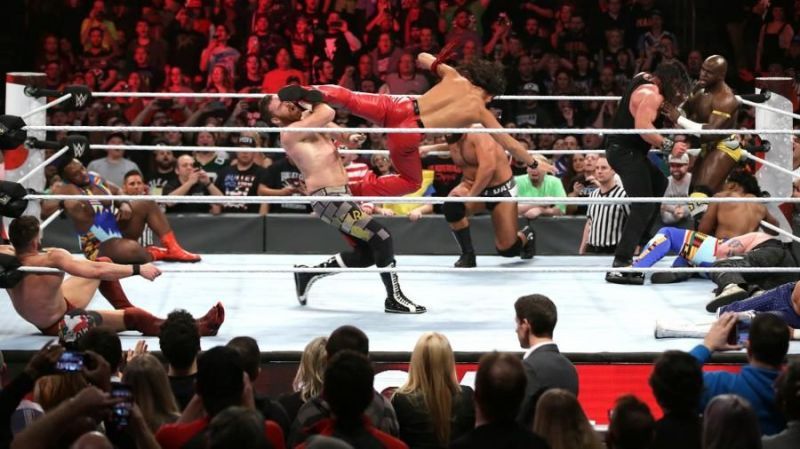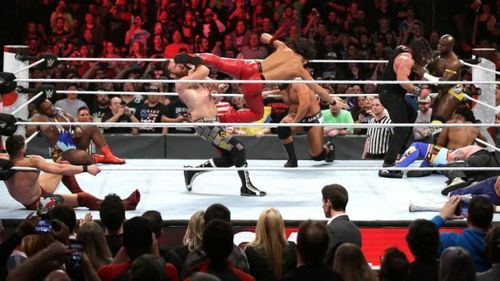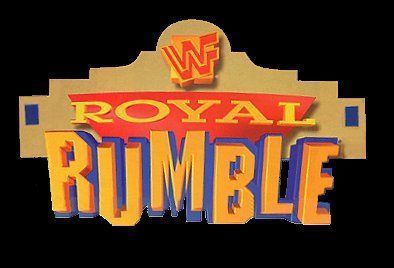
Why the Royal Rumble is indeed the 'greatest' WWE match concept

WWE's annual 30-man battle royal extravaganza, with its namesake pay-per-view and Road To Wrestle Mania tie-in has always been one of the most popular match styles ever produced by the company (pay-per-view buy rates before the WWE Network was introduced put the show at second only to Mania), yet perhaps because of this secondary status, it's at times felt a bit underappreciated as an important and genius match style in and of itself.
Created by Hall of Famer Pat Patterson 30 years ago in 1988, the Royal Rumble quickly became one of the Big 4 pay-per-views that have defined the WWE calendar year. Though the path to a championship match on the biggest night in wrestling wasn't formally introduced until the 1993 match (won by the late Yokozuna), one thing the Rumble has always been is an all-star display of WWF/E's talent roster.
During the Classic or "Rock N Wrestling" Era, the Attitude Era and the current NXT-influenced indy-centric era, WWE's roster has been so stacked that the match takes on the feel of a whos-who grandstanding affair (for reference, at least 24 of this years thirty participants in Philadelphia have held championships of some sort in the company, and at least eight have been WWE champion), whilst at leaner times, like the mid-90s New Generation era, the roster has been so thin as to require the use of jobbers to fill up half the participant spots.
Regardless of how deep the talent pool was at the time though, it's always been interesting to see almost everyone of note in the company come out for one giant match. At no other point in the year does this sort all-hands on deck matchup take place, and for that reason alone, the Royal Rumble holds as much importance as the NBA or MLB All-Star games within the sphere of wrestling.
The real genius behind the Rumble though is its ability to thread multiple storylines and narratives into one big match. Take the 1997 Rumble for instance. Ahmed Johnson's beef with the Nation of Domination, Owen Hart's family quarrel with the British Bulldog (the lead up to Bret later acting as a mediator and reforming the Hart Foundation), Goldust's spat with Triple H, Mick Foley and Terry Funk's brutal history, and the Undertaker's drama with Vader were all intertwined in one match which also featured high-flying luchadors, a comedic Jerry Lawler elimination spot and most importantly, the bad-assery of Stone Cold Steve Austin's 40-plus minute endurance and eventual triumph, which itself featured callbacks to his 1996 feuds with Savio Vega, Jake "The Snake" Roberts and Bret Hart (Hart's storyline arc of getting consistently "screwed" out of matches until leaving the company later that year when it became a shoot, also began here).
Despite being upper mid-card at the time, Austin breezed through the competition eliminating 10 other participants including everyone he had feuded with in the company up until that time, cementing himself as a future major player without having to pin a protected main eventer. Upon watching multiple times, the sequencing of the match becomes more and more impressive as everything--entrances, timing, spots, and eliminations--seemed to weave together like a colorful crochet garment.
Lest we also forget that the Rumble is also an absolutely fantastic avenue to create surprising entrants, shocking returns sand incredibly athletic saves. From John Cena's 2008 return, to the various "Kofi moments", the Rumble is a crucial vehicle that can easily create Wrestle Mania-caliber memories and get anyone over with the right timing, whether they go on to win or not.

Whilst more recent Royal Rumble's may lack the intricate booking and thoughtful storytelling of the WWF in its heyday (perhaps due to the aging Patterson not being involved in the planning process), 2018 was certainly an entertaining improvement over the other years from this decade, with Rey Mysterio's welcome return, the charisma-oozing Shinsuke Nakamura becoming the first Japanese Superstar to win, the first Women's Royal Rumble proving that the ladies can perform just as well as the guys, and the Greatest Royal Rumble in Saudi Arabia giving us the first supersized 50-man competition and first international Rumble setting. The Rumble is such an inventive concept that similar battle royals have been created elsewhere in the pro-wrestling sphere, mostly notably NJPW's New Japan Rumble.
One can only hope for a future WWE product where some of the admitted weaknesses in the booking (big men dominating but never winning, number one and two entrants having more wins than number thirty, the predictably of no more than 4-5 entrants having a realistic shot at winning) can be corrected in future years with a little unpredictable swerving thrown in.